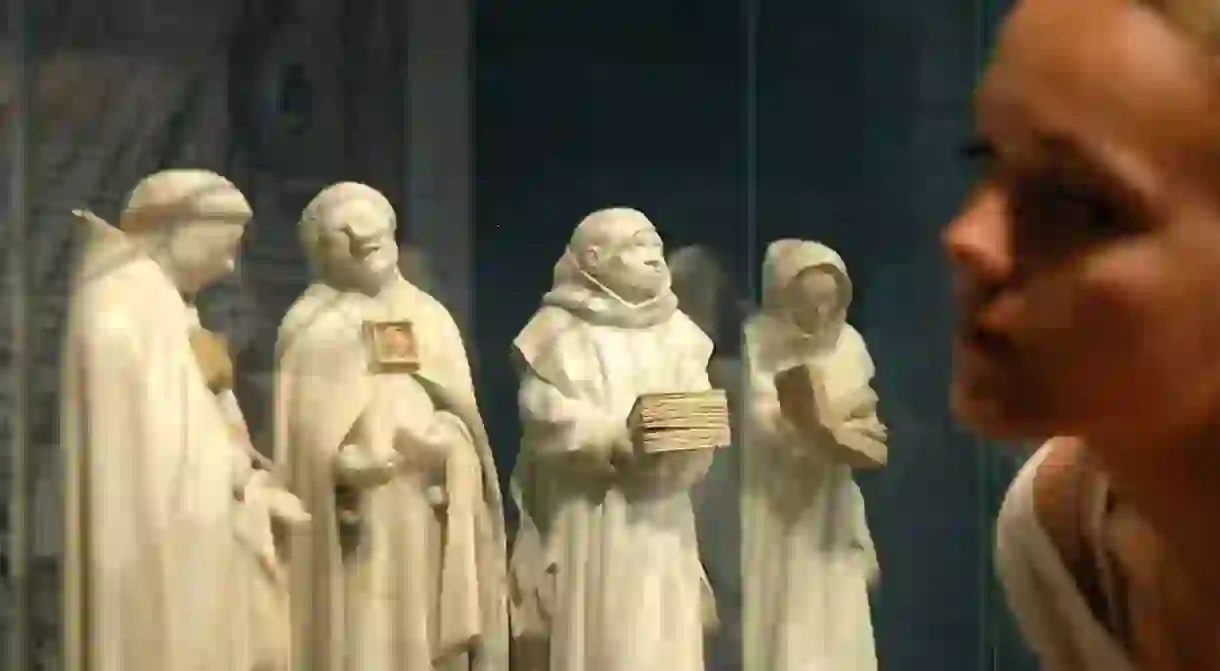The Best Museums in Dijon, France

With its prestigious status as the former seat of the Dukes of Burgundy, Dijon is proud of its heritage – and rightly so. The city itself is a huge open museum replete with listed monuments, medieval houses, and gothic temples. It is no surprise therefore that Dijon offers an excellent bouquet of fascinating museums and, as the cherry on the gâteaux, most offer free admission.
Musée des Beaux-Arts
Museum

The Museum of Fine Arts is one of the oldest museums in France, and certainly the most spectacular in Dijon. Recently renovated, the medieval wing features the renowned cenotaphs of the Dukes of Burgundy, with their collection of mourners. It’s worth a trip to Dijon just to admire these tiny but oh-so-expressive alabaster sculptures. The richness of the collections would require several visits as it stretches from Egyptian art to the 20th century — never mind the historical interest of the building itself, the splendid Palais des Ducs.
Musée Magnin
Museum

Walking through the doors of the Musée Magnin is finding a hidden treasure chest. The Lantin House is one of the finest 17th-century mansions in Dijon, then home of avid collectors Jeanne and Maurice Magnin. They put together a remarkable collection of paintings, drawings and objects, which they bequeathed to the state in 1938 with the condition that it would be kept and exhibited as it was when the home was lived in, and that the works of art could not be removed. This means that in order to see the extraordinary masterpieces living here, visitors have to make the pilgrimage because there’s no chance of seeing them in touring exhibitions anywhere else. A beautiful, elegant surprise, this museum is not to be missed.
Musée Archeologique
Museum

The collections offer a vast panorama of man’s presence in Burgundy from prehistory to the Middle Ages through to exhibits of the key sites of the region. The exhibits of the Musée Archéologique display artefacts coming from all over the Côte-d’Or department. Set up initially by the Departmental Antiquities Commission, they have been installed in one of the wings of the imposing St. Bénigne abbey since 1930.
Musée Rude
Church, Museum

Dijon native François Rude is best known for his sculpture gracing the Arc de Triomphe in Paris. The Musée Rude, looked after by the Fine Arts museum, is dedicated to the talented artist’s work and occupies the transept of the former St-Étienne Church, a sober monochrome background to display his sculptures and plasters. The foundations of a Roman fort offer an added element of interest to the visit.
Musée de la Vie Bourguignonne
Monastery, Museum

A visit to the Perrin de Puycousin Museum of Burgundy Life, located in the cloister of the Bernadine Monastery, is like travelling through time to rural Burgundy in the 18th, 19th and the 20th centuries. The low-tech exhibits have a charming retro atmosphere, like opening the yellowing pages of an illustrated storybook,with arrangements of costumes, household objects, and minute details that serve to recreate the ordinary life of the average Burgundy country dweller.













